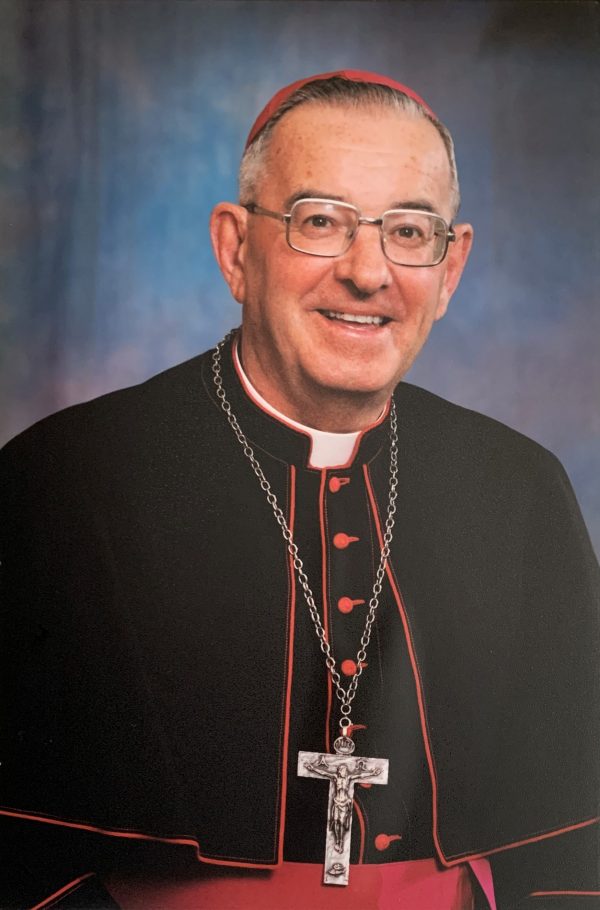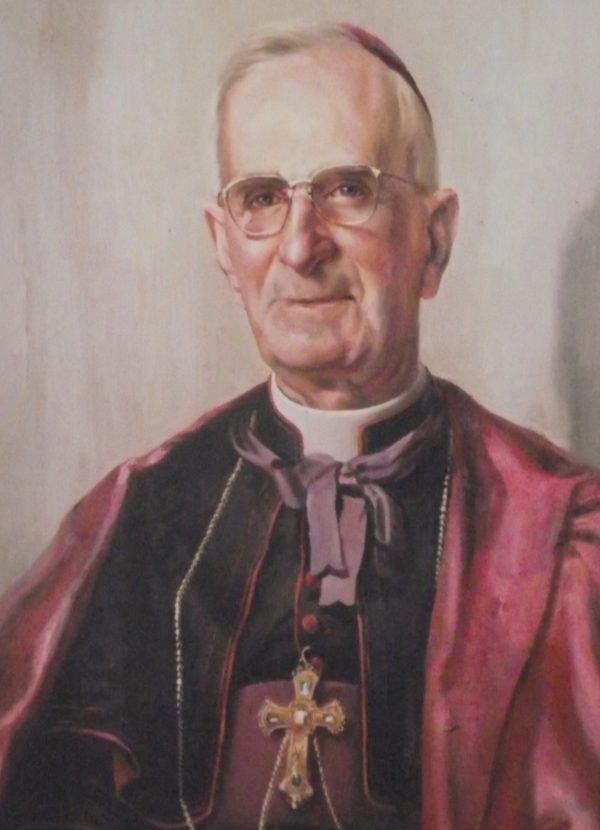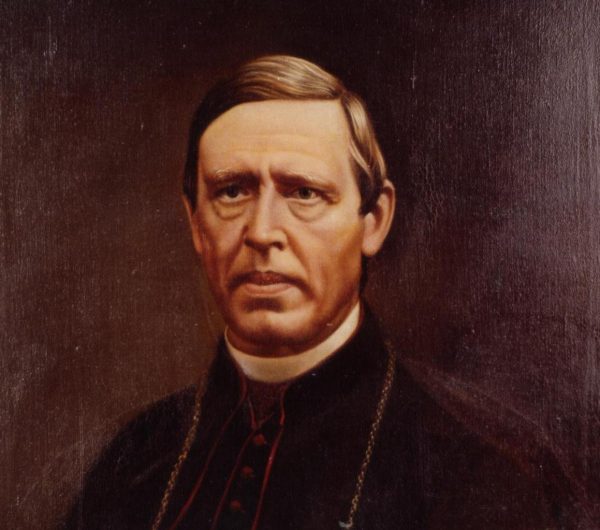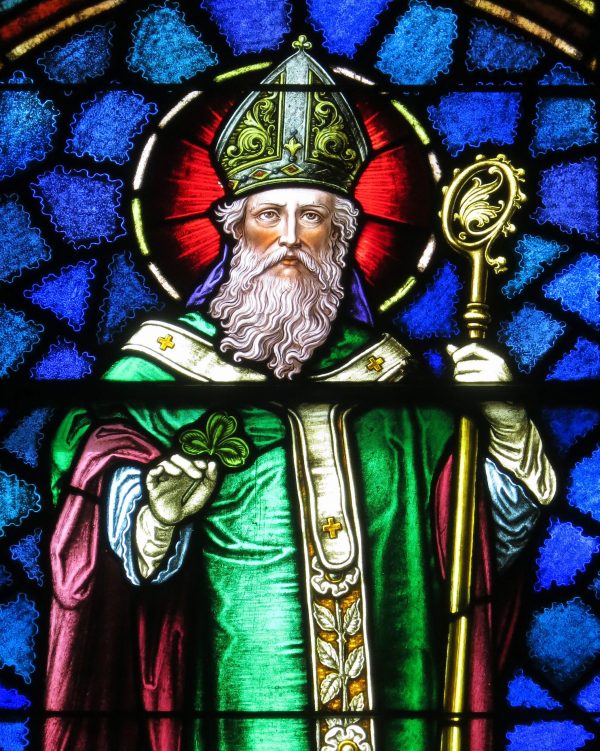History of the Diocese
The Catholic Diocese of Bathurst was established in 1865. Prior to this, Bathurst was simply a church district.
It seems certain that the first Mass to be celebrated in Bathurst, was celebrated by pioneer priest Fr John Joseph Therry, on 1 or 2 November 1830, when he was called from Sydney to attend the execution of a convict, Ralph Entwistle. In those days, Bathurst was “the remotest part of the colony” and Mass was likely said in a room over a stable at an inn at Kelso.
In July 1838, the Reverend Fathers Michael O’Reilly and Thomas Slattery arrived from Ireland and were appointed to Bathurst, now established as a new church district. They attended 26 stations including Mt Victoria, Mudgee, Wellington, Dubbo and Bathurst. There was no church, and Mass was probably celebrated in the courthouse at first.
In June 1841, Dean O’Reilly visited Wellington and Dubbo, the first recorded visit of a priest to these districts.
The area of the Bathurst mission was broken down in size as new mission centres opened. Hartley/Lithgow was already recognised as a mission centre as far back as 1842. Five other missions: Carcoar (1847), Sofala (1851), Mudgee (1852), Wellington (1856) and Orange (1864), came into being before the Diocese was formally established in 1865.
Work commenced on the parish church, situated on the corner of George and Keppel Streets and known as St Michael’s. The Parish of Bathurst was created in 1839 and St Michael’s was opened for worship in the middle of 1841, though its building was not completed for a further two years. After about 10 years, subsidence made it unfit for public worship, though it was used as a school for a number of years.
By 1853, Catholic schools in Bathurst had a roll call of 90 boys and 130 girls.
In 1857, the foundation stone of St Michael and St John’s Cathedral was blessed by the Archbishop of Sydney, Dr John Polding, with the blessing and opening in April 1861.
1865 saw Bathurst become a separate diocese. The area covered by the Diocese changed little from when it was a mission in 1841.
Dr Matthew Quinn was the first Bishop and remained in the Diocese until his death some 20 years later.
Today, the Diocese covers 103,680 square kilometres and includes 17 parishes, from Coonamble in the north to Cowra in the south, Lithgow in the east to Eugowra in the west.
Previous bishops
Patrick Dougherty, 1983 – 2008
Patrick Dougherty (1931-2008) was born in Kensington, Sydney on 21 November 1931. He was ordained a priest on 7 December 1954.
Obtaining his Doctorate of Divinity in Spiritual Theology from the Urban University in Rome in February 1957, he returned to Australia and was appointed Assistant Priest of St Mel’s in Campsie (Sydney).
Bishop Dougherty was ordained a bishop on 8 December 1976 and from then until 1983, was an Auxiliary Bishop of the Archdiocese of Canberra and Goulburn and Secretary of the Australian Episcopal Conference. In 1983, he was appointed as the seventh Bishop of the Diocese of Bathurst and was installed on 5 October that year.
He retired on 11 November 2008 and resided in Bathurst until his death on 30 August 2009.
Albert Reuben Edward Thomas, 1963 – 1983
Albert Thomas (1908-1983) was born in Farnborough, England on 26 October 1908. His family immigrated to Australia in 1911. His seminary studies took place at St Columba’s College, Springwood, and St Patrick’s College, Manly. He was ordained a priest for the Archdiocese of Sydney on 30 November 1931.
In 1946, Fr Thomas was appointed the National Director of Pontifical Mission Aid Societies in Australia, a position he held until 1973. As National Director, he was known across Australia and worldwide for his zeal and enthusiasm for the missions.
On 26 September 1963, Albert Thomas was nominated as the sixth Bishop of Bathurst by Pope Paul VI, who then consecrated him as bishop in St Peter’s Basilica, Rome on 20 October 1963, World Mission Sunday. He was then formally installed in the Cathedral of St Michael and St John, Bathurst by Cardinal Gilroy on 19 April 1964.
Bishop Thomas attended the third and fourth session of the Second Vatican Council in Rome. This gave him a clear insight to the pastoral changes required of the Church in the new modern world.
As an able administrator, he implemented sweeping changes in the life of the Diocese, including establishing the Diocesan Pastoral Revenue. He developed the Chancery Office and improved the Diocesan Archives. He founded the Catholic Observer and encouraged parish pastoral councils and finance committees. He called for lay involvement in the administration and governance of the Diocese, through appointments to Diocesan councils for education, finance, health facilities, children’s homes and ecumenism.
The retirement of Bishop Thomas was announced on 12 April 1983, by Pope John Paul II, due to ill health. He acted as Apostolic Administrator until his sudden death from heart failure on 24 September 1983.
John Francis Norton (Coadjutor Bishop 1926 -1928), 1928 – 1963
Dr John Norton (1891-1963) was born in Luca, near Dublin on 30 January 1891. He attended the All Hallows Seminary, Dublin, achieving distinguished results graduating with a Bachelor of Arts degree from the National University, Dublin. He was ordained a priest on 20 June 1915, in Dublin, leaving his homeland almost straight away to commence work in the Diocese of Bathurst on 9 December 1915.
Eight years after his ordination, Fr Norton was appointed as Administrator of the Cathedral Parish.
In early 1926, Fr Norton accompanied Bishop O’Farrell CM, fourth Bishop of Bathurst, to Rome. Due to the Bishop’s failing health, the Holy Father appointed Fr Norton as Coadjutor Bishop for the Diocese of Bathurst. He was consecrated in Rome on 18 April, 1926 and upon his return to Australia, was appointed Parish Priest of Canowindra.
Upon the death of Bishop O’Farrell, Bishop Norton became the youngest bishop in the Church and the fifth Bishop of Bathurst on 3 April 1928. He then commenced his pastoral care and leadership of the Diocese which continued for the following 35 years, until his death at St Vincent’s Hospital, Bathurst on 20 June 1963.
Dr Norton was an accomplished speaker and writer with a sincerity of faith, shown through his earnestness prayer, his deep devotion to the Blessed Sacrament and his unflinching trust in God’s support. His most remembered quality was his love and care for his people.
Seventeen archbishops and bishops and more than 200 priests attend his Requiem Mass in the Chapel of St Stanislaus’ College, with thousands gathering in the College grounds to hear the broadcast of the Mass which was done over radio stations throughout the Diocese.
Michael O’Farrell CM, 1920 – 1928
Michael O’Farrell CM (1865-1928), was born in Ireland at Milhow, (Milltown) near Mullingar on 7 April 1865. He entered Maynooth Seminary and was ordained in 1887 and joined the Vincentians.
Almost a year elapsed after the death of Bishop Dunne, before Bishop O’Farrell was appointed the fourth Bishop of Bathurst, on 16 June 1920. He was consecrated on 30 November 1920 in the Cathedral of St Michael and St John, Bathurst by the Apostolic Delegate, Archbishop Cattaneo.
O’Farrell was a man of foresight. Aware that his health was failing, he took his secretary and the Administrator of the Cathedral, Fr John Norton, with him for his voyage to Rome in 1925. While there, he arranged to have Norton consecrated a bishop, with right of succession. Mindful, no doubt, that the Diocese had languished without a Bishop for over a year before his appointment, he did not wish that to be repeated. It is also not unlikely that he wished as his successor, a man whom he could trust to carry on the work he had begun.
He returned to Australia in ill-health and died in Orange Presbytery on the evening of the Wednesday of Holy Week, 4 April 1928. He was buried from the Cathedral in Bathurst on the following Monday, 9 April.
John Mary Dunne, 1901 – 1919
John Dunne (1845-1919) was born on 8 June 1845 at Tooreigh, Mitchelstown, County Cork, Ireland. He studied for the priesthood at the Catholic Missionary College of All Hallows, Drumcondra (Dublin), where he was ordained priest on 24 June 1870.
Dunne reached Sydney on 2 February 1871, and was sent to the Diocese of Bathurst. He served in the Fish River district, at Mudgee and at Wentworth on the Darling. In 1875, he was appointed the Parish Priest of Dubbo and lived in a tent until he had built a brick church and the Convent of Mercy, which had day and boarding schools by 1885.
That year, he was called to Bathurst by Bishop Byrne, to administer the Cathedral Parish. Under his supervision, the Patrician Brothers’ monastery was built and the Cathedral enlarged. He was appointed Vicar General in August 1900.
Following Bishop Byrne’s death, Dunne was appointed Bishop of Bathurst on 12 January 1901 and he was consecrated by Cardinal Moran on 8 September 1901.
As a pioneering priest and as bishop, Dunne was laborious, much enduring and resourceful. He travelled throughout the Diocese, and was widely known as the ‘Builder Bishop’, ensuring that every parish had a church, school, presbytery and convent.
Throughout his life, Dunne promoted Catholic education. As a prudent and skilful administrator and a near-genius at raising money, he made the ‘voluntary system’ work in the Diocese.
Greatly beloved by his parishioners, Bishop Dunne died of cancer at Bishop’s House on 22 August 1919 and was buried in the Catholic section of Bathurst cemetery.
Joseph Patrick Byrne, 1885 – 1901
Joseph Patrick Byrne (1843-1901), was born on 18 June 1843 in Dublin. He studied at St Lawrence O’Toole College and then at the Rouen Seminary. Ordained there in 1865 he then volunteered his services to Dr Matthew Quinn, newly-appointed first bishop of Bathurst, accompanied him to Australia and proved himself a most competent and loyal colleague. Such was the impression he made, Bishop James Murray successfully sought his services to administer the Diocese of Maitland during his absence in Europe from 1869 to 1873.
Bishop Byrne, seemed the obvious choice to succeed Bishop Quinn. He was consecrated by Bishop Murray on 9 August 1885 and was Bishop of Bathurst for 15 years, complementing the work of his predecessor.
Bishop Byrne added churches in Gulgong, Coonamble and Stuart Town, and a Convent at Wellington. He increased the teaching strength by bringing the Brigidine Sisters in 1883 and the Patrician Brothers in 1886. He also established the St Vincent de Paul Society.
Byrne’s most significant changes were in the Diocesan colleges. Realising the difficulty of maintaining them with Diocesan clergy, he invited the Vincentian Fathers to take over St Stanislaus Boarding School in 1888.
Bishop Byrne died on 12 January 1901 from cancer.
Matthew Quinn, 1865 – 1885
Matthew Quinn (1821-1885), was born on 29 May 1821 at Eadestown, County Kildare, Ireland. He entered the Propaganda College, Rome, in 1837 to study for the priesthood and transferred to the Pontifical Irish College on 4 September 1839, where he graduated with a Doctorate of Sacred Theology in September 1845. He was ordained a priest in the Church of St John Lateran, Rome, on 15 February 1847 and left Rome on 30 July 1847 for Hyderabad, as a missionary with Bishop Daniel Murphy.
Appointed first Catholic Bishop of Bathurst, Quinn was consecrated with his cousin, James Murray, in Dublin’s Pro-Cathedral on 14 November 1865, by Archbishop Cullen. He arrived at Sydney in October 1866 and was installed at Bathurst on 1 November 1866.
He established a system of Catholic schools principally run by religious orders. Such a system had been initiated in Adelaide under Bishop Sheil and Father Julian Tenison-Woods. His zeal in founding schools led to a dispute with Mother Mary MacKillop over the administration of the Sisters of St Joseph, and finally caused Quinn to found his own congregation of Sisters of St Joseph at Perthville. He founded St Stanislaus’ College, the St Charles Seminary and introduced the Vincentian Fathers.
He died on 16 January 1885 at St Stanislaus’ College and was buried in the Cathedral of St Michael and St John, Bathurst.
Patron Saint of the Diocese of Bathurst – St Patrick
The patron saint of the Diocese of Bathurst is St Patrick. Given the foundation clergy and religious of the Diocese were predominantly Irish, it’s not surprising that they placed their faith in St Patrick, when deciding on the diocesan patron.
St Patrick was born in Roman Britain and when he was 14 or so, he was captured by Irish pirates during a raiding party and taken to Ireland as a slave, to herd and tend sheep
Patrick’s captivity lasted until he was 20, when he escaped after having a dream from God in which he was told to leave Ireland by going to the coast. There he found some sailors who took him back to Britain and he was reunited with his family.
A few years after returning home, Patrick saw a vision he described in his memoir:
“I saw a man coming, as it were from Ireland. His name was Victoricus, and he carried many letters, and he gave me one of them. I read the heading: ‘The Voice of the Irish.’ As I began the letter, I imagined in that moment that I heard the voice of those very people who were near the wood of Foclut, which is beside the western sea – and they cried out, as with one voice: ‘We appeal to you, holy servant boy, to come and walk among us.'”
The vision prompted his studies for the priesthood. He was ordained by St Germanus, the Bishop of Auxerre, under whom he had studied for years. He was later ordained a bishop and sent to take the Gospel to Ireland.
Patrick arrived in Slane, Ireland on 25 March 433. There he converted many people, eventually thousands, and he began building churches across the country.
He often used shamrocks to explain the Holy Trinity and entire kingdoms were eventually converted to Christianity after hearing Patrick’s message.
Patrick preached and converted all of Ireland for 40 years. He worked many miracles and wrote of his love for God in Confessio. After years of living in poverty, travelling and enduring much suffering, he died on 17 March 461, now famously known as the Solemnity of St Patrick.
He died at Saul, where he had built the first Irish church. He is believed to be buried in Down Cathedral, Downpatrick.
Patrick was a humble, pious, gentle man, whose love and total devotion to and trust in God should be a shining example to each of us. So complete was his trust in God, and of the importance of his mission, he feared nothing, not even death.
An extract from “The Breastplate”, Patrick’s poem of faith and trust in God:
Christ with me, Christ before me, Christ behind me,
Christ in me, Christ beneath me, Christ above me,
Christ on my right, Christ on my left,
Christ when I lie down, Christ when I sit down, Christ when I arise,
Christ in the heart of every man who thinks of me,
Christ in the mouth of every man who speaks of me,
Christ in the eye that sees me,
Christ in the ear that hears me.









